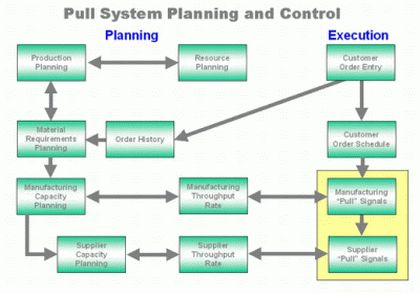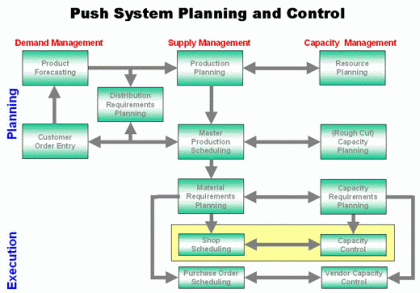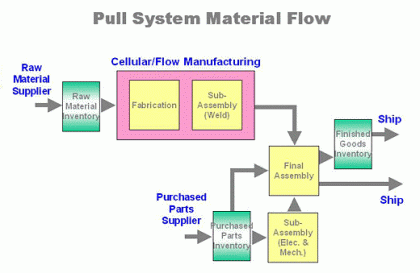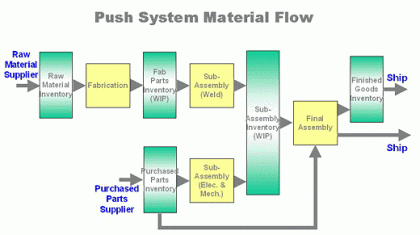|
|
|
KANBAN
The concept of pull in lean production means to respond to the pull, or demand, of the customer. Lean manufacturers design their operations to respond to the ever-changing requirements of customers. Those able to produce to the pull of customers do not need to manufacture goods that traditional batch-and-queue manufacturers must rely on. The planning for delivery of product to customers is less troublesome, and demand becomes more stable if customers have confidence in knowing that they can get what they want when they want it.
Kanban is a Japanese word that means "instruction card". Kanbans are manual pull devices that allow an efficient means to transfer parts from one department to another and automatically reorder products using minimum/maximum inventory levels. A Kanban is a signal, such as an empty container returned to the start of the assembly line, that signals the need for replenishment of materials to a user.
- Kanbans are used in "pull" manufacturing systems, where product is manufactured to the pull of market-driven demand.
- Kanban systems must be convenient and easy to use
- Pull systems react to needs, they don't anticipate them
- Successfully deployed Kanbans deliver the right amount of material to the right place exactly when it is needed.
- Several pull techniques can be used for different products at the same worksite.
- Great speed can be achieved in manufacturing, and product is not manufactured when a need does not exist.
- A kanban or pull system means providing the workers with what they need when they need it - tools, software, capital equipment, access, feedback, or the opportunity to participate.
- Kanbans or cards are used when the move time and distance between producing and consuming departments are significant.
- each card controls a specific quantity of parts
- cards are returned to the producing department after parts are consumed triggering production of the next batch
- single card systems are used when the products are able to be resupplied prior to running out
- multiple card systems are used if the producing worksite produces several products or if the lot size is different from the move size
- Physical Kanbans, Kanban squares, or shelf reserves are used when the producing and consuming worksites are physically adjacent.
- must have relatively close proximity
- used when major queue of parts is maintained in the producing department. Maximum and minimum queue size can coordinate production between worksites with different capacities
- physical area holds enough space to cover variations in rates
- goal of the producing department is to fill the space reserved for the part.
KANBAN vs. BATCH-AND-QUEUE
The unpredictable and expensive batch-and-queue method of manufacturing, coupled with unreliable forecasting associated with traditional production models, is replaced with reliable, predictable, Kanban systems.
BENEFITS:
- achieves shop floor control of inventory and production scheduling without the aid of materials requirements planning (MRP)
- links producing and consuming processes while often reducing WIP by 50%
- increases productivity
- reduces inventory and floor space
- dramatically improves lead times
- sets up point-of-use material storage and better interfaces with planning systems
- sets lot sizes with capacity rather than economic order quantity theory
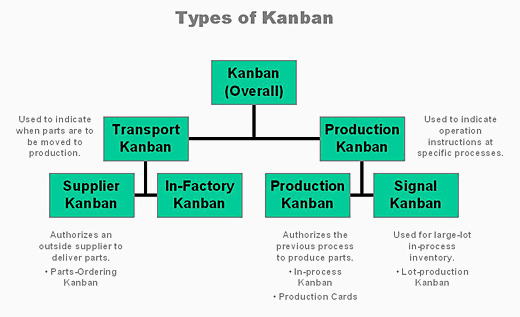

For further details contact PDP
TQM|
Homeopathy|
Cotact Us|
Copyright 20013-16 "pdponline"
Page designed,created and
maintained by pdpal.







